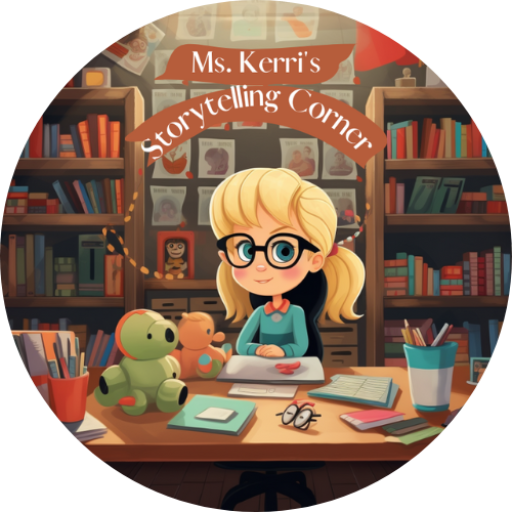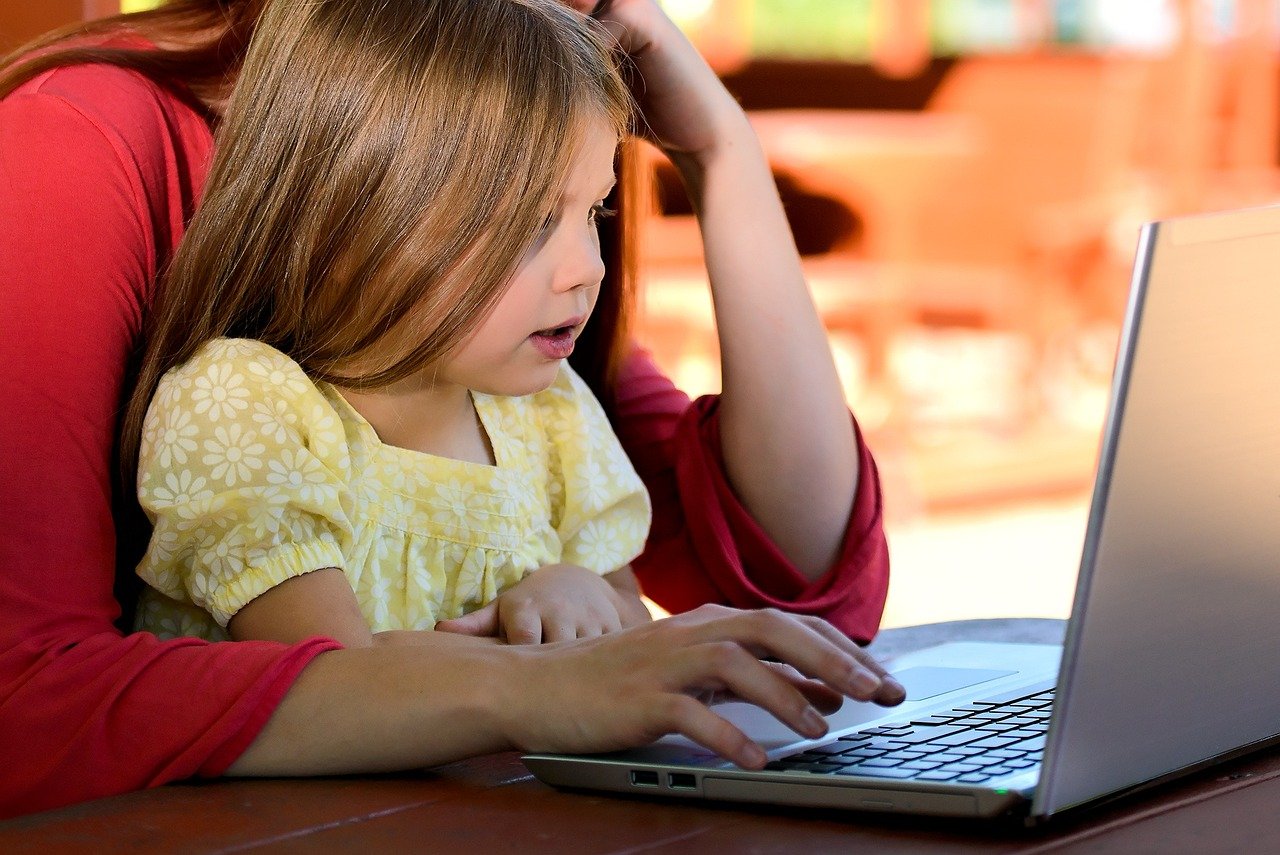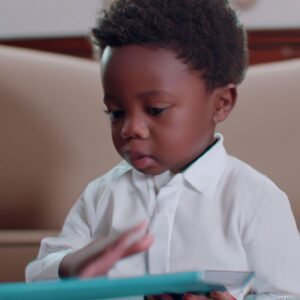How Do You Engage Preschoolers In Lessons?
Engaging preschoolers in lessons can be a fun and interactive experience. By incorporating creative and hands-on activities, educators can capture the attention and imagination of young learners. In this article, we explore various strategies to make learning exciting and engaging for preschoolers.
Key Takeaways
- Turning the classroom into a mini-adventure land can enhance preschoolers’ engagement and interest in lessons.
- Puppetry and storytelling are effective tools for teaching preschoolers as they combine entertainment with education.
- Incorporating music and movement into lessons can make learning enjoyable and memorable for preschoolers.
- Taking lessons outdoors provides a stimulating environment for preschoolers to learn and explore.
- Engaging preschoolers in interactive and sensory activities can help them retain information and foster a love for learning.
Turning the Classroom into a Mini-Adventure Land

Crafting Quests out of Lessons
Transform your classroom into a realm of wonder, where every lesson is a quest and every child a brave knight or a cunning wizard. Embark on educational escapades that make learning as thrilling as a rollercoaster ride at the fair. Imagine the gasps of excitement as you unveil the day’s challenge, a journey through the treacherous terrain of Telling Time or the mystical forest of Fractions.
- Start with a story: Set the stage with a captivating tale that leads into the lesson.
- Assign roles: Each child becomes a character with special tasks.
- Create obstacles: Puzzles and problems that must be solved to ‘advance’ in the quest.
In this enchanted classroom, the mundane morphs into the magnificent, and every answer found is a dragon slain.
Remember, the key is to keep the energy high and the stakes personal. Will the kingdom of Counting survive the attack of the Decimal Dragons? Only our young heroes can tell! And as they tally their triumphs, they’re not just learning—they’re living the adventure. After all, who wouldn’t want to be the hero of their own Activity Quest?
The Magic of Dress-Up and Role Play
Imagine a world where little learners don their capes and crowns, transforming the classroom into a kingdom of knowledge. Dress-up and role play aren’t just fun and games; they’re a gateway to engagement and understanding. When preschoolers step into the shoes of a character, they’re not just playing pretend—they’re stepping into a powerful role of learning.
- Crafting Characters: Each child picks a persona, from brave knights to clever scientists.
- Setting the Scene: The classroom morphs into a stage for imagination.
- Dialogue and Discovery: Kids converse and solve problems in character.
By embodying their characters, children explore complex concepts with ease and excitement.
The beauty of this approach lies in its simplicity and its depth. It’s a costume party with a purpose, a playful jaunt through the curriculum. And let’s not forget the sheer joy of watching a pint-sized pirate passionately pursue the ‘P’s and ‘Q’s of the alphabet. It’s about creating a space where the Benefits of Imaginative Play shine, fostering a love for learning that’s as deep as the sea they sail.
Treasure Hunts: Learning through Discovery
Ahoy there, little explorers! Ready to embark on a treasure hunt? Transform your classroom into a map-speckled sea of excitement, where X marks the spot for knowledge. Watch as curiosity unfurls like a pirate’s sail, guiding preschoolers to islands brimming with educational riches.
- Chart a course with riddles that lead to math mysteries.
- Navigate through letter lagoons, piecing together phonetic puzzles.
- Unearth hidden artifacts that tell tales of history and science.
Every nook and cranny of the classroom becomes a potential goldmine of discovery, where learning is the ultimate loot.
Remember, the true treasure isn’t just the ‘aha!’ moments—it’s the journey, the challenges, and the teamwork. So, set sail on the high seas of imagination, and let the learning adventure begin!
The Art of Puppetry and Storytelling
Sock Puppets: The Unsung Heroes of Education
Let’s face it, sock puppets are the unsung heroes in the realm of educational tools. They’re not just a cozy home for lost socks; they’re the gateway to giggles and learning. Transforming a sock into a character is like waving a magic wand over a classroom – suddenly, every child is spellbound, eager to meet their new fabric friend.
Creativity blooms as little hands bring these puppets to life, each one a unique personality ready to teach and entertain. Here’s a quick rundown on how to get started:
- Gather a colorful array of socks (the funkier, the better!)
- Scrounge up some buttons, yarn, and fabric scraps
- Let the kids dive into the decoration process – no hot glue guns required!
Remember, the goal is to let the kids do the crafting. It’s about the process, not just the end product.
And just like that, you’ve got a troupe of sock puppet educators ready to tackle topics from spelling to social skills. Who knew a sock could wear so many hats… or should we say, so many faces?
Spinning Yarns: Making Every Story a Lesson
Every preschooler’s dream is to live inside a storybook, and why not? With a sprinkle of creativity, every tale can be a teachable moment. Transform narratives into interactive experiences, and watch as little eyes sparkle with the magic of learning. Imagine the Three Little Pigs as a masterclass in construction, or Goldilocks as a lesson in manners and respecting others’ space.
- Start with a captivating story.
- Ask thought-provoking questions.
- Encourage role-playing based on the story.
- Connect the story to real-world concepts.
In the heart of every story lies a hidden lesson, waiting to be unearthed by curious minds and guided by imaginative educators.
Creating a literacy-rich environment is not just about stacking books on a shelf. It’s about weaving the importance of literacy into the very fabric of the classroom. Here are some practical tips to promote literacy among preschoolers:

- Label classroom objects to build vocabulary.
- Create a cozy reading nook that invites exploration.
- Use story prompts to inspire young authors.
Remember, the goal is to make learning so exciting that it feels like play. After all, when the story ends, the learning doesn’t have to.
The Puppet Show: Where Learning Meets Laughter
Imagine a world where giggles and guffaws are just as important as grammar and geometry. That’s the realm of the puppet show, a place where characters come to life and learning becomes a belly-laughing affair. Puppets are the secret sauce to an engaging lesson, transforming mundane topics into memorable escapades.
- Puppets can represent historical figures, acting out moments in time.
- They can be animals, teaching biology through furry antics.
- Or even fantastical creatures, bringing elements of literature to vivid life.
With every string pulled and every puppet prance, concepts stick like glue in the giggly goo of young minds.
The beauty of puppetry lies in its versatility. It’s a tool that adapts to any subject, any mood, and any lesson. One day, your classroom is a stage for Shakespearean soliloquies, the next, a comedic romp through the water cycle. And let’s not forget the power of a puppet blooper—nothing cements a fact better than a hilarious mishap!
The impact of kindness and inclusion, as showcased in tales like “Wonder” and “The Invisible Boy”, can be woven seamlessly into puppet narratives, teaching valuable lessons in compassion, acceptance, and friendship. It’s not just about the laughs; it’s about shaping hearts and minds with joyous jest.
Musical Chairs and Other Groovy Lessons
Busting Moves with the Alphabet
Let’s crank up the tunes and get those tiny toes tapping! Alphabet aerobics isn’t just a tongue twister; it’s a full-blown preschool party. Imagine the giggles as ‘A’ stands for ‘arm-waving’ and ‘B’ is for ‘booty-shaking’. Each letter brings a new move, transforming the ABCs into a dance-off that would even impress the cool kids.
- A: Arm-waving Antics
- B: Booty-shaking Boogie
- C: Clapping Crescendo
Preschool activities focus on socialization, STEM, fine motor skills, indoor fun, outdoor learning, and early math concepts for preschoolers.
But it’s not all about the boogie—oh no! We’re sneakily slipping in some serious learning here. As they jive and jump, these little learners are also honing their phonics skills, getting a workout for both their brains and bodies. And let’s not forget the sheer joy of watching a room full of preschoolers attempting the ‘Q’ quiver or the ‘Z’ zigzag. Priceless!

Numbers Jamboree: Counting to the Beat
Let’s turn up the volume on learning with a Numbers Jamboree! Imagine tiny toes tapping, little fingers snapping, and a chorus of kiddos counting out loud. It’s not just a foot-tapping good time; it’s a full-on mathematical melody!
- Start with a simple beat and a number one.
- Add a stomp for two, a clap for three, and before you know it, you’re at ten!
Who said math had to be silent and still? Not us! We’re making numbers sing, dance, and practically do cartwheels across the classroom floor. And the best part? They’re learning, they’re laughing, and they’re getting those wiggles out all at the same time.
Remember, every hop is a count, and every count is a hop closer to math mastery.
So, grab that tambourine and let’s get this party started! Because when you mix a beat with numbers, you’ve got a recipe for a math-tastic adventure. And hey, if you’re feeling extra snazzy, throw in a counting book or two. They’re not just for bedtime stories; they’re the secret sauce to a numbers feast!
Science with a Twist: The Rhythm of the Planets
Let’s face it, the only thing that orbits faster than the planets is a preschooler on a sugar rush. But what if we could harness that energy and transform it into a cosmic dance of education? Imagine a classroom where the solar system isn’t just a poster on the wall, but a living, twirling, hip-shaking reality.
Blast off into learning by assigning each child a planet and have them revolve around the ‘sun’ in the correct order. They’ll be learning about space, sure, but they’ll also be picking up on rhythm, coordination, and the sheer joy of movement. It’s a planetary party and everyone’s invited!
- Mercury: Quick steps for the speedy planet!
- Venus: A slow, swirling waltz.
- Earth: Jump and bounce, we’ve got life to celebrate!
- Mars: Stomp those feet, find water if you can!
In this interstellar classroom, every twirl is a lesson in physics, every leap a chapter in astronomy. We’re not just teaching facts; we’re cultivating little astronauts with imaginations as boundless as the universe itself.
And let’s not forget the power of a good game to cement those stellar facts into young minds. Why not a round of ‘Bananagrams’ with a space twist? Prepare for spelling bees by building vocabulary with words like ‘asteroid’, ‘galaxy’, and ‘meteor’. It’s one small step for spelling, one giant leap for word power!
The Great Outdoors: A Classroom Without Walls
Bug Hunts: Exploring Nature and Science
Let’s turn those little critters into scientists! Imagine the thrill as preschoolers embark on a bug hunt, armed with magnifying glasses and containers, ready to explore the tiny universe beneath their feet. It’s a jungle out there—in the best possible way!
Every leaf turned is a discovery, every ant hill a mountain to conquer. They’ll learn about habitats, life cycles, and maybe even get a little dirty (because what’s science without a bit of mess?).
- Identify the bugs
- Observe their behavior
- Draw their habitats
With each bug caught, a question pops: Why does it have so many legs? What does it eat? The world is their oyster—or should we say, their anthill?
And let’s not forget the data! A simple table to track their findings can be a game-changer:
| Bug Type | Color | Number of Legs | Habitat |
|---|---|---|---|
| Ant | Black | 6 | Dirt |
| Beetle | Red | 6 | Grass |
This isn’t just about bugs; it’s about sparking a lifelong curiosity for the wonders of nature and the thrill of scientific discovery. So grab your nets and let’s get buzzing!

Picnic Math: Learning Shapes and Numbers in the Park
Imagine a sunny day, a checkered blanket, and a basket brimming with shapes… I mean sandwiches! Who said math can’t be a picnic? Literally! Let’s count the sides of our sandwiches, shall we? Triangular ham and cheese, rectangular PB&J, and don’t get me started on those circular cookies. Every bite is a math lesson in disguise!
- Spot the shapes: Circles in plates, squares in napkins.
- Counting conundrum: How many ants are joining our picnic?
- Size sorting: From smallest crumb to largest watermelon slice.
Embrace the chaos of a crumbly cookie; it’s a chance to explore fractions!
And when the snacks are all gobbled up, it’s time for the real fun. Let’s play ‘I spy with my little eye’ with a mathematical twist. Find me something that’s a hexagon or maybe something that’s got more sides than you can count on your fingers. It’s a hoot, it’s a holler, and before you know it, those preschoolers are geometry wizards, all thanks to a little outdoor escapade.
Storytime Under the Sky: Literature with a Breath of Fresh Air
Imagine the giggles and wiggles settling down as the clouds above play audience to the day’s tale. Outdoor reading sessions are not just about the stories; they’re a sensory buffet for young minds. The rustling leaves, the soft grass underfoot, and the occasional butterfly guest star make each word come alive in a way no indoor reading circle can match.
- Find a cozy spot under a tree or set up a reading nook with blankets and pillows.
- Choose books with nature themes to match the setting.
- Encourage the children to describe what they see and hear as part of the story.
Embrace the unpredictable! A sudden breeze or a curious squirrel can become part of the narrative, turning a simple reading session into an improvised adventure.
Remember, the goal is to create an environment where literature is as refreshing as the air they’re breathing. It’s about making reading a dynamic experience, one where every sense is engaged and every page turn is a gust of fresh excitement. So, pack your book-bag, grab a floppy hat, and let’s take our young readers on an open-air journey through the pages of their favorite tales.
Frequently Asked Questions
How do I keep preschoolers engaged during lessons?
Engaging preschoolers can be done through interactive activities, hands-on learning, and incorporating fun elements like games and music into lessons.
What is the importance of incorporating play in preschool lessons?
Play is crucial for preschoolers as it helps them develop social skills, creativity, problem-solving abilities, and enhances their overall learning experience.
How can I make lessons more interactive for preschoolers?
You can make lessons interactive by using props, engaging in role-playing activities, incorporating technology, and encouraging active participation through games and group activities.
What are some effective ways to introduce new concepts to preschoolers?
Introducing new concepts can be done through storytelling, hands-on experiments, visual aids, and incorporating real-life examples that preschoolers can relate to.
How do I handle preschoolers with different learning styles in a classroom setting?
To cater to different learning styles, it’s important to provide a variety of activities, use multisensory approaches, offer individualized attention, and create a supportive learning environment.
What role do parents play in engaging preschoolers in lessons?
Parents play a crucial role in supporting their child’s learning by reinforcing lessons at home, communicating with teachers, and actively participating in their child’s educational journey.


Ms. Kerri’s Corner provides a exciting virtual space for preschool learning. Through a variety of engaging activities, she exposes young minds to early math, literacy, science and social-emotional skills in a developmentally appropriate way. Centers for blocks, art, books and music allow children to explore hands-on learning at their own pace. Guided lessons subtly introduce number sense, letter sounds and narrative thinking. Careful observation gives insight into each child’s progress across domains. Viewers are also invited to participate, reinforcing that their ideas are valued. By making learning fun yet purposeful, Ms. Kerri lays the groundwork for future academic success while fostering creativity and imagination. Her program offers preschoolers valuable screen-based learning experiences.




